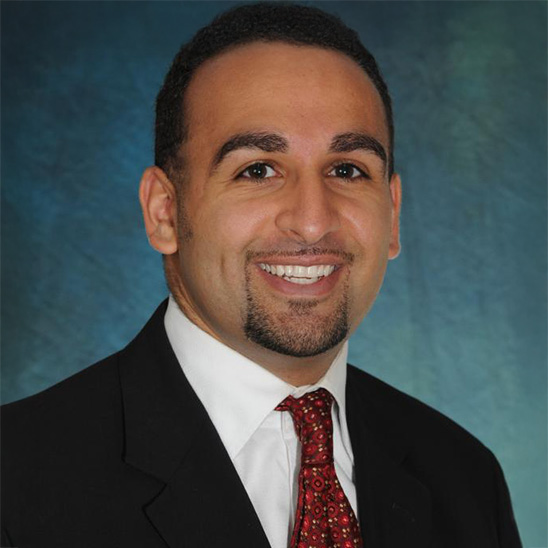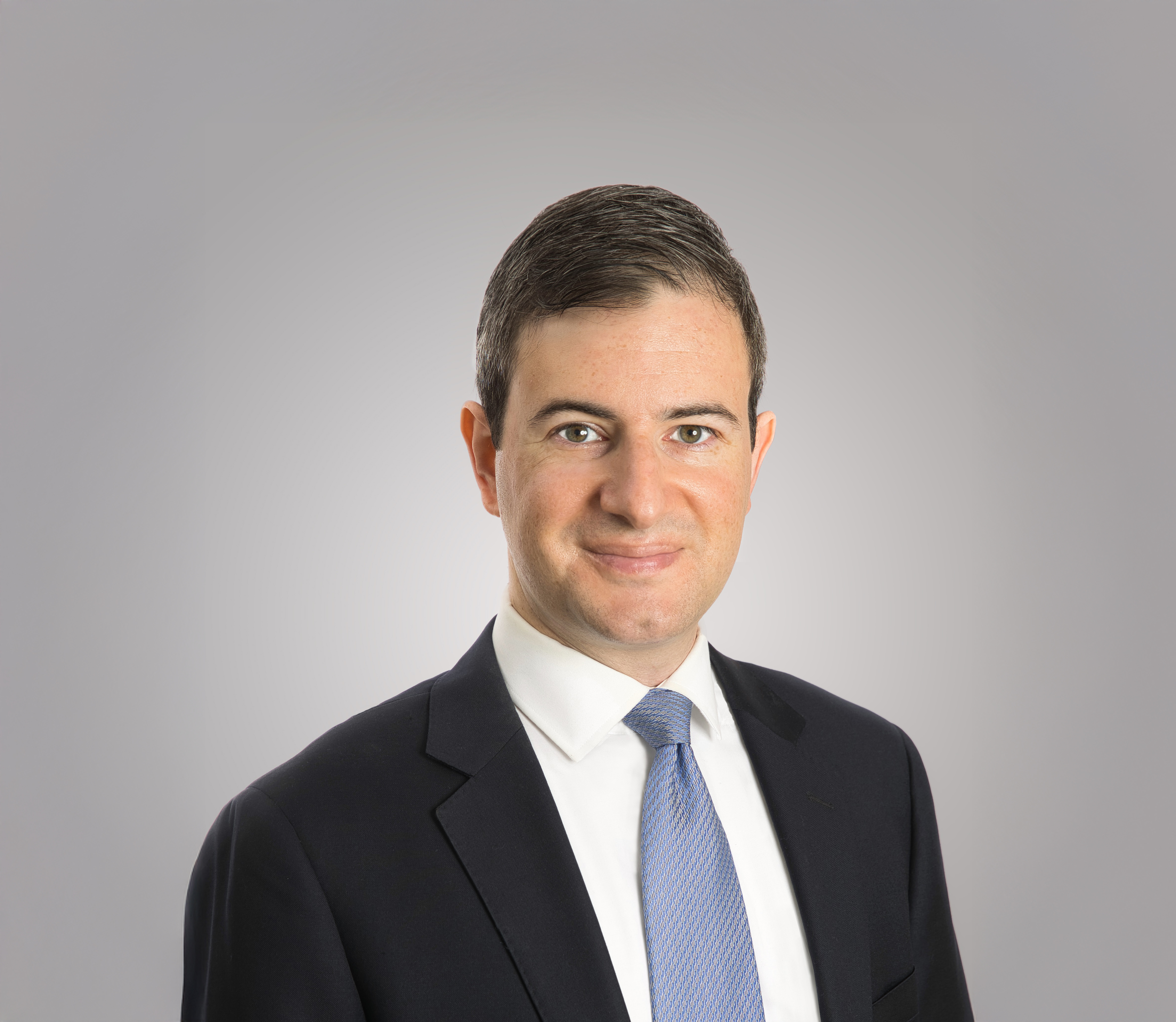New Frontiers in Glaucoma Surgeries
Featuring
Ahmad A. Aref, MD, MBA
Illinois Eye and Ear Infirmary





Ahmad A. Aref, MD, MBA
Illinois Eye and Ear Infirmary

This event featured Dr. Ahmad A. Aref, MBA of the Illinois Eye & Ear Infirmary, a board-certified ophthalmologist specializing in glaucoma and cataract surgery. He is an Associate Professor of Ophthalmology and attending physician in the Glaucoma and Cataract Consultation Service at the University of Illinois College of Medicine Department of Ophthalmology and has also authored over 60 scientific publications. The doctor discussed Minimally Invasive Glaucoma Surgeries, also called MIGS. He then explained how MIG procedures differ from other glaucoma surgeries, how MIG procedures are performed, if the operation is permanent, and who might be a viable candidate for the procedure.
Download English Transcript PDF Download Spanish Transcript PDF
MS. DIANA CAMPBELL: Hello, and welcome the BrightFocus Glaucoma Chat. My name is Diana Campbell, and I’m pleased to be here with you today. For those who are new, the BrightFocus Glaucoma Chats are a monthly program in partnership with the American Glaucoma Society, and it’s designed to provide people living with glaucoma, as well as the family and friends that support them, with information provided by glaucoma experts. The American Glaucoma Society counts the leading glaucoma specialists in the country in their membership, and we’re looking forward to hearing them discuss many topics about glaucoma during this Chat series. If you’re new to the Chat or not yet familiar with the BrightFocus Foundation, we fund some of the top scientists in the world who are working to find better treatments and, ideally, cures for glaucoma, macular degeneration, and Alzheimer’s disease. And we do events like today’s Chat to get the latest news from science as quickly as possible to families that are impacted by these diseases. You can find much more information on our website, www.BrightFocus.org.
I’m pleased to introduce today’s guest, Dr. Ahmad Aref, who is a board-certified ophthalmologist specializing in glaucoma and cataract surgery. He is an associate professor of ophthalmology and an attending physician in the glaucoma and cataract consultation service at the University of Illinois College of Medicine, Department of Ophthalmology. Dr. Aref has authored over 60 scientific publications and book chapters and served as an active peer reviewer for several ophthalmic medical journals. Dr. Aref, thanks so much for joining us today.
DR. AHMAD AREF: Thank you. Such a pleasure to be with you and to be with everybody. Welcome to the call, and I’m so glad that we have this opportunity. You know, I think our office visits together with patients sometimes are limited in terms of time, and so, hopefully, we can use the next half-hour or so to dedicate to discussion about an exciting group of surgeries and address some common questions, and happy to follow up afterwards, as well.
MS. DIANA CAMPBELL: Wonderful. Yes, I know for so many people, the questions are about drops, and so we’re super excited to cover MIGS today—minimally invasive glaucoma surgery. And so, let’s kind of start from there. Can you educate us about what MIGS are?
DR. AHMAD AREF: The abbreviation, M-I-G-S, stands for minimally invasive—sometimes micro-invasive—glaucoma surgery. And MIGS are actually not just one surgery; it’s many different types of surgeries that all share some common aspects and some common goals. And so, as a group of surgeries, these surgeries aim to treat the eyes’ natural drainage outflow system to help the eye drain its internal fluid in an easier way. And typically, MIGS procedures are relatively low risk—of course, it’s not zero risk, because they’re still surgeries—but relatively low risk with a relatively quicker recovery time than our traditional surgeries. Of course, we know that glaucoma is a condition that can only be treated by lowering the pressure inside of the eye, and MIGS procedures are a group of procedures that are some of the tools that we have for lowering eye pressure by treating the eyes’ natural drainage network.
MS. DIANA CAMPBELL: What an interesting angle for how to treat eye pressure. You mentioned in your introductory statement that there’s many types of MIGS. So, could you kind of outline what the various types are?
DR. AHMAD AREF: Yeah, sure. I think we’re practicing in an exciting age in medicine, in general, in ophthalmology, and then more specifically, in glaucoma. And we’re practicing in an age of innovation, I would say, where it’s … as a surgeon and as a physician, it’s almost difficult to keep up with all of the different new techniques and new procedures. And for that reason, there’s many types of MIGS procedures that aim to try to improve upon one another. So, that’s one reason why we have many of these procedures available. Another reason is that we learned that the eyes’ outflow system—the drainage system—is actually very complex and intricate, and we learn more details about the outflow and the drainage pathway year after year.
And with those learnings, we learn to make devices and innovate techniques to treat all the different parts of the drainage pathway. There are some MIGS procedures that stent open that pathway like a cardiac stent would stent open a blood vessel—very similar in how that’s done. There are other MIGS procedures that remove part of the drainage tissue that is believed to be most resistant to the flow of fluid. And then there are other types of MIGS procedures that—rather than removing any tissue or stenting open the drain—there’s other MIGS procedures that kind of inflate the drainage canal to try and rejuvenate it, to try to get it working again, working better than prior. So, those are some broad categories of MIGS procedures. The category that involves removing tissue, that category is typically referred to as goniotomy, or trabeculotomy is another term. And the term that we use for mixed procedures that inflates the canal is canaloplasty. And then there’s various stents that are, kind of, proprietary and trademarked by various companies that make the different types of stents.
MS. DIANA CAMPBELL: Sure. So, it sounds like there are so many involved; I imagine you are kind of matching each individual patient to the best proposed outcome for them, but is there one that’s considered better or different than the rest? And if you could just quickly touch on why there are so many different avenues for essentially the same goal of reducing pressure?
DR. AHMAD AREF: I would say that there’s not one that is best. There are some MIGS procedures that give a higher chance of lowering eye pressure than others, and there’s some MIGS procedures that lower eye pressure more than others. But with that often comes increased risk. And although MIGS procedures as a whole are relatively low risk, I would say that they’re not all similar risk. And the MIGS procedures that lower eye pressure more tend to be the ones that have some higher risk associated with them, and the MIGS procedures that lower eye pressure more modestly tend to be less risk. And so, at the end of the day, when a surgeon makes their decision about which surgery in general—or in this case, which MIGS procedure—to choose they have to delicately balance that risk associated with the procedure and also the needs of the patient in terms of eye pressure lowering. So, on the one hand, you may have a patient whose eye pressure seems to be pretty well controlled, but maybe they require multiple medications to keep that eye pressure controlled, and perhaps a MIGS procedure may be needed to lower the burden of medication. In that case, maybe the MIGS procedure that’s selected is not as powerful and also not as risky as another procedure. On the other hand, you may have somebody whose eye pressure is too high, even with multiple medications, and really needs to be lowered to a safe level in order to protect the optic nerve. And in that case, we may need a different type of MIGS procedure that’s more likely to lower eye pressure, and it may be worth the risk that’s involved with that specific surgery.
MS. DIANA CAMPBELL: Sure, that makes sense. We actually just got a question in from people listening today. Does MIGS surgery replace eye drops, and is it permanent?
DR. AHMAD AREF: Yeah. That’s a great one, great question. So, the way that we study MIGS procedures and the way that they’re approved by the U.S. Food and Drug Administration—the FDA—is there are clinical trials that are done to try to answer questions like this. And in the clinical trials that have been performed with MIGS procedures, they show that a large percentage of patients—probably 70 percent of patients or so—are able to stop at least one medication after a MIGS procedure. Of course, there’s some variability in that, just like there’s variability in responses to any intervention. But on average, I would say 70 percent chance that at least one medication is able to be stopped and can be stopped for at least 2 years. Now, as you start to follow patients out longer than that, like many of the surgeries that we do, sometimes the eye can heal, and over time, there may be more and more of a need for eye pressure reduction, and eye pressure medications may need to be restarted. So, what I would say is probably there’s a 70 percent or so chance that we’ll be able to stop at least one eye drop for a good 2 years, and then after that, the chances of needing to be … needing that eye drop again start to go up. So, I think, that … hopefully that answers that question.
MS. DIANA CAMPBELL: I think it does, and it makes a lot of sense. In some cases, I think people might want to hear it will last forever, but if we’re being honest, the daily keep-up of doing multiple drops at different times of the day and everything else, that relieves a relatively big burden, I think, for a lot of people. If there’s anything more you want to touch on how MIGS differ from traditional glaucoma surgery, and then if you could give a brief overview of how MIGS procedures are done.
DR. AHMAD AREF: Yeah. MIGS procedures differ from traditional glaucoma surgery in a few ways. With traditional glaucoma surgery, typically we’re not aiming to enhance drainage of the eye through the eye’s natural drainage network; instead, we’re aiming to create a whole new drainage pathway for the eye. And we can do that using the eye’s natural tissues with a surgery called trabeculectomy, or sometimes we do that using a little microscopic silicone tube that’s placed inside the eye. So, instead of using the eye’s natural drainage system, we’re creating a whole new drainage pathway with those surgeries. The traditional glaucoma surgeries are typically a little bit more involved. They take more time in the operating room, and then there’s typically more postoperative visits that are required and more intensive visits, as well, with higher risk associated with those procedures than with MIGS. But on the flipside, those procedures—the traditional glaucoma surgeries—have been very well studied and have been proven to be effective in lowering eye pressure over the long term and preserving vision for patients who have glaucoma and can lower eye pressure to a greater degree than with our MIGS procedures. So, those are two of the main ways they differ. Other ways they differ is that the vision is typically recovered a little bit more quickly than with traditional glaucoma surgeries. And MIGS procedures—as I’m sure we’ll get to—tend to be more easily combined with cataract surgery, which is a common type of operation that almost everybody will need over their lifetime. And MIGS procedures lend themselves very well to combination with cataract surgery.
MS. DIANA CAMPBELL: That makes sense. So, you know, the sub-question to that is: How do you do MIGS? But I think that’s probably a difficult answer because there’s a lot of different approaches. But I guess in a broad sense, you mentioned with traditional a longer recovery time, longer time in the operating room. What should a patient expect? You know, are you under anesthesia? Are you numbed? And how long should you expect to recover?
DR. AHMAD AREF: Yeah. I’m sorry I didn’t get to that second part of the question. But in terms of how MIGS procedures are performed, they’re performed through a small incision in the cornea, which is the front clear part of the eye. Usually, the incision is only 1.5 to 2 millimeters, and these procedures are done under IV sedation, typically. And they’re same-day surgeries, where patients go home the same day. And during the surgery, we use a special contact lens in order to visualize the eye’s natural drainage network and then engage it and approach it with the various MIGS procedures. In terms of … surgical time is typically about 10 to 15 minutes or so, unless the procedure is being combined with another operation. And again, because these MIGS procedures are done through a corneal incision, which is almost the exact incision as what will be made for cataract surgery, MIGS procedures are often combined with cataract surgeries. So, if you add up the 10 to 15 minutes for the MIGS procedure, and then 15 to 20 minutes for the cataract surgery, then it’s usually 30 to 35 minutes total for both operations.
In terms of recovery, it’s a same-day surgery, and usually the surgeon will want to see patients either that same day or the next day, and then about a week later, and then 2 or 3 weeks after that. For the first week or so, we typically have patients refrain from any heavy lifting or bending with the head below the heart. And then after about a week, one can usually resume almost all activities. For the first week or so, the vision typically fluctuates, and then after about a week, it’s fairly stable. And the eye pressure can actually fluctuate, as well. And typically, the final eye pressure after a MIGS procedure stabilizes after about 6 weeks or so.
MS. DIANA CAMPBELL: Oh, that’s really good to know and to manage expectations. So, you did mention the combination of cataract surgery. I’m wondering if there are any MIGS that do not require that. And then the follow-up with that is: Who is a good candidate for the surgery, and who might not be a good candidate?
DR. AHMAD AREF: Yeah. MIGS procedures are often combined with cataract surgery because both types of surgery use the same exact incision. And so, if somebody suffers from a cataract that requires surgery, incorporating a MIGS procedure does not add that much risk to the risk that’s already been accepted with cataract surgery. Now, there are MIGS procedures that can be performed without cataract surgery. Many times, an individual may benefit from a MIGS procedure, but maybe they don’t have a cataract yet, or maybe they’ve already had cataract surgery. And yes, we have a number of different types of MIGS procedures that are available to us in those circumstances. It’s just that these days, if a patient has glaucoma, and has been treated with medications for several years and now they’ve started to develop a cataract, which is affecting their vision, removing the cataract, in a way, provides us an opportunity to get a better handle on the glaucoma and perhaps reduce the medication burden at the same time. So, that’s why the two types of procedures go so well together.
In terms of candidates for MIGS, one important thing to consider is that in order to perform a MIGS procedure, the surgeon needs to be able to visualize and see the eye’s drainage pathway. And in some types of glaucoma, the drainage channel may become blocked or occluded by other structures inside the eye, and if the drainage canal is scarred closed or it’s blocked, then that individual would not be a good candidate for these MIGS procedures. Another consideration is that sometimes we need eye pressure to be lowered more than what a MIGS procedure can offer. With all the benefits that we’ve covered with MIGS, you know, one drawback is that they’re not able to lower eye pressure to the degree of our traditional glaucoma surgeries. So, if an individual needs their eye pressure lowered substantially, a MIGS procedure may not be the best option for them.
MS. DIANA CAMPBELL: This is so interesting. Thank you, that makes a lot of sense. And I think you covered my next question which is going to be: With the various options, how do you decide which MIGS to use? You, in a sense, covered that. Are there any other thoughts you want to add to that question?
DR. AHMAD AREF: No. You know, I think it just all goes back to that balance of risk and benefit, and it’s a very individualized approach. And also, some of it depends on, you know, if the patients had other types of surgeries and things. The nice thing is that we’ve got a pretty good selection to choose from, and we can often find at least one good type of MIGS procedure for a given patient.
MS. DIANA CAMPBELL: That’s great. So, before I ask the next question about how it fits into your practice, I have two questions from people listening about new approaches for exfoliation glaucoma and dispersion-based glaucoma. And if that’s not what you cover, that’s fine. But I figured I would ask just in case.
DR. AHMAD AREF: Yeah. Those are both great questions. Pseudo-exfoliation glaucoma and pigmentary glaucoma are both relatively common types of glaucoma that we see. They are specific types of open-angled glaucomas; open-angle meaning that the eye’s drainage channel is not typically blocked, but it can be visualized. And so, that allows patients suffering from pseudo-exfoliated glaucoma and pigmentary glaucoma to actually be good candidates for MIGS procedures. And in fact, studies are consistent in showing that patients with pseudo-exfoliation glaucoma, especially, tend to respond very favorably to MIGS procedures, which makes sense because what we understand about pseudo-exfoliation is it’s caused by an accumulation of waste material within the eye inside the eye’s natural drainage system. So, these MIGS procedures, because they work directly at the drainage site, can help to, in a way, kind of clear out some of that debris. But there’s still no way that we know of to stop that debris from accumulating in the first place. And the concept goes for pigmentary.
DR. AHMAD AREF: It’s similar thinking for pigmentary glaucoma, as well. The studies that we have don’t show as much of a benefit as what we see for pseudo-exfoliation glaucoma with pigmentary glaucoma for unclear reasons, but both types of glaucoma tend to be good candidates for MIGS procedures.
MS. DIANA CAMPBELL: Great, thanks for covering that. One last question from the audience, then we’ll keep going. How does the optic nerve status determine MIGS surgery? How does that relate to the pressure and everything else, or is that not as much a factor?
DR. AHMAD AREF: Well, it’s definitely a factor. And it’s a factor because if somebody with early damage to their optic nerve or moderate damage to their optic nerve, they may … that individual may not be as aggressive with eye pressure lowering as somebody else with an advanced degree of optic nerve damage. Someone who has advanced optic nerve damage often needs to aggressively lower eye pressure, and sometimes that cannot be realistically achieved with a MIGS procedure.
MS. DIANA CAMPBELL: Oh, that makes a lot of sense. Thank you for covering that. So, transitioning slightly, but back to where we were before I started asking other questions: How does MIGS fit into your practice? And I know every glaucoma specialist has their balance, but for you, is it something you do every day, or is this something … are you mostly prescribing drops, or sometimes … could you just kind of describe what it looks like for you on a daily basis?
DR. AHMAD AREF: Yeah. So, the most common scenario by far for me and for most of my glaucoma specialist colleagues around the country and around the world is for our patients that we’ve cared for for glaucoma for several years, and it comes a time in their lives where their cataracts are starting to affect their vision. And that’s a time in life that will happen to everybody. And most glaucoma specialists treat glaucoma as well as cataracts. And so, when that time comes, then that is an ideal opportunity to combine removal of the cataracts with a MIGS procedure, again, to better manage the glaucoma over the years to come and also to decrease the medication burden. And since the patient requires the surgery anyways, with that tiny little incision that’s made we can leverage the opportunity to perform a MIGS procedure. That’s going to be the most common scenario by far for myself and also for others practicing. Other typical scenarios would be if somebody, again, has already had cataract surgery and maybe needs their eye pressure a little bit lower and maybe for some reason they’re not a good candidate for traditional glaucoma surgery, then MIGS can be a good option there. And again, if somebody is … maybe they’re not ready for cataract surgery yet, we can still perform MIGS procedures in that setting.
MS. DIANA CAMPBELL: I really love how you outlined that doctor–patient relationship and how, in your view, you have the same patient over the course of, in some cases, half a lifetime. And then, because of your treatment history, you know when it’s the right time. And I think that that relationship is important to build, and I think that’s especially good to highlight. And obviously, as you mentioned, there are different variables and everything else. But I think that’s a really good takeaway for people listening, like that relationship with the doctor is really important to develop and build trust and continue that over the years. Okay, so the next question is: If somebody is not a candidate for MIGS, are there still treatment options for them, and what would that look like?
DR. AHMAD AREF: Yes, definitely. Of course, we’re spending this call focusing on MIGS, but the rest of our glaucoma treatment options are very exciting, as well. We have new medical options, new eye drops that work in ways that are completely different than the eye drops that we’ve previously had available. We have new laser treatments that have been proven to be safer earlier on when one is initially diagnosed with glaucoma. And then, of course, we have our traditional glaucoma surgeries, which have been tried and true. And there’s decades’ worth of data that we have supporting our traditional glaucoma surgeries. So, just because somebody’s not a candidate for MIGS does not mean that we cannot use one of these other exciting treatment options to get a handle and stabilize their glaucoma and decrease any risk for deterioration and vision loss.
MS. DIANA CAMPBELL: That makes sense. So, coming back to MIGS, what advice do you have for patients who are considering MIGS?
DR. AHMAD AREF: Well, my advice would be to recognize the benefits of MIGS, which is the quicker recovery time and how it combines so well with cataract surgery—so, to recognize those benefits but also recognize the limitations. It’s not … the MIGS procedures … and nothing in glaucoma is going to fix the problem. We don’t have a cure for glaucoma. We just have many different very effective and useful tools to control the disease and keep one from losing vision over their life. So, one should just have that broad, I think, expectation and understanding and understand that, at one moment in their lives, MIGS might be a good option for them, and then in another moment in their lives—maybe years later—something else may be needed. And just to understand that, and also to keep a positive outlook because year after year, there are improvements made in our therapies. I’m sure that 5 years from now we will have even better treatments than what we have today, and if a MIGS procedure or anything else gets us through this time period now, then we can utilize one of those future options later on.
MS. DIANA CAMPBELL: Yeah. I’m not a scientist or a doctor, and the way I’m looking at that from a lay perspective is: Many surgeries, you’re getting a transplant, you’re getting something removed, you’re getting something inserted. This is really not quite the same thing. This is something that, in the longevity of your journey with glaucoma, you might do it once, you might have something different that we don’t know about yet in a couple of years, and it’s really just part of the treatment journey the way drops are. And it’s obviously different from drops through all the ways you’ve outlined, but it’s not the be-all and end-all in terms of, like, “Okay, I’ve had this surgery, and now I don’t have this body part anymore, or I don’t have this problem anymore.” It’s really just part of the treatment plan, you know, on a continual basis.
DR. AHMAD AREF: That is perfectly said, and I’m actually going to use that line, “treatment journey,” with my patients. I think that’s a great way to think about it.
MS. DIANA CAMPBELL: Oh, thank you for that. So, we kind of took a step back. We’re going to loop back to where we were. You covered the myriad of different things that are available now, and you referenced the future. Is there anything in the pipeline, you know, in clinical trials or being currently developed that you’re particularly excited about or looking forward to?
DR. AHMAD AREF: Yeah, there are a few things. There’s newer MIGS procedures that will leverage different parts of the drainage system, and those are under study right now. The other really exciting thing that will be coming forward in the next few years is hopefully we will have ways to determine who will respond favorably to MIGS procedures. And I think that will come down to imaging techniques that we do in the office and being able to image the patient’s eye and image the drainage network in more detail than what we can do now may help us determine who are better candidates for MIGS procedures, who’s likely to respond. And it may also help us to guide our MIGS procedures so that we can target the most appropriate part of the drainage pathway.
MS. DIANA CAMPBELL: That’s really exciting. We work in macular degeneration also, and there’re always so many new things coming along, and so with glaucoma, it’s really great there’re so many options, but it’s also very exciting to think about the future, as well.
DR. AHMAD AREF: Yes.
MS. DIANA CAMPBELL: I want to take this opportunity to mention that if you are interested in receiving an article that we produce, we have a series called the Glaucoma Surgery Series, and there’s an article on MIGS. So, if you would like that or you would like a transcript of this Chat, please leave a message by simply staying on the line at the end of the call, listen for the beep, and then leave your mailing address or your email address. We also have a toll-free phone number which is (855) 3456647. And just a note, our next BrightFocus Glaucoma Chat will be on March 8, and we will discuss lifestyle changes to help glaucoma. So, Dr. Aref, to close out today’s Chat, we so much appreciate your time and all of this really important and interesting information that you’ve shared. Before we conclude, are there any final remarks, things to mention to your doctor, or anything else you’d like to share with our audience today?
DR. AHMAD AREF: Well, I want to thank you. I think we covered a lot. I actually don’t have too much to add at this point and hopefully, the attendees found this useful.
MS. DIANA CAMPBELL: Yeah. I think you covered almost everything that we had on … planned for today, and I appreciate that. As always, people can leave messages with additional questions. We’ll respond to you as soon as we receive them in a week or so. And with that, this concludes today’s BrightFocus Glaucoma Chat.
BrightFocus Foundation is a premier global nonprofit funder of research to defeat Alzheimer’s, macular degeneration, and glaucoma. Through its flagship research programs — Alzheimer’s Disease Research, Macular Degeneration Research, and National Glaucoma Research— the Foundation has awarded nearly $300 million in groundbreaking research funding over the past 51 years and shares the latest research findings, expert information, and resources to empower the millions impacted by these devastating diseases. Learn more at brightfocus.org.
Disclaimer: The information provided here is a public service of BrightFocus Foundation and is not intended to constitute medical advice. Please consult your physician for personalized medical, dietary, and/or exercise advice. Any medications or supplements should only be taken under medical supervision. BrightFocus Foundation does not endorse any medical products or therapies.

Discover the latest innovations in glaucoma treatment, from surgical implants to sustained-release medications.

Can lifestyle changes help reduce glaucoma risk? Join us as glaucoma specialist Jullia A. Rosdahl, MD, PhD, discusses how diet, exercise, sleep, and other non-drug interventions may impact eye pressure and overall eye health. Learn about the latest research on nutrition, supplements, and daily habits that could support vision preservation.

Join Dr. Lawrence S. Geyman as he outlines effective ways to find support for your glaucoma diagnosis.

Learn about the similarities and differences between these two vision diseases, whether someone can develop both conditions at the same time, and how to reduce your risk.

Join us for an insightful conversation with Dr. Jaehong Han about the different types of glaucoma, including open-angle, angle-closure, normal-tension, and more, discussing who is most affected by each and how treatments can vary.
